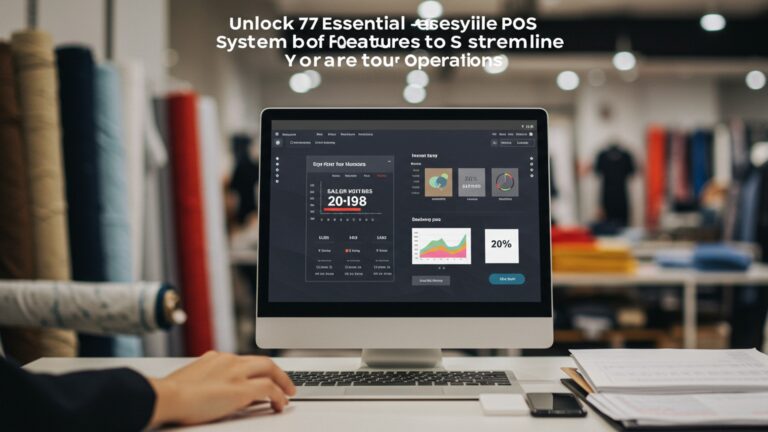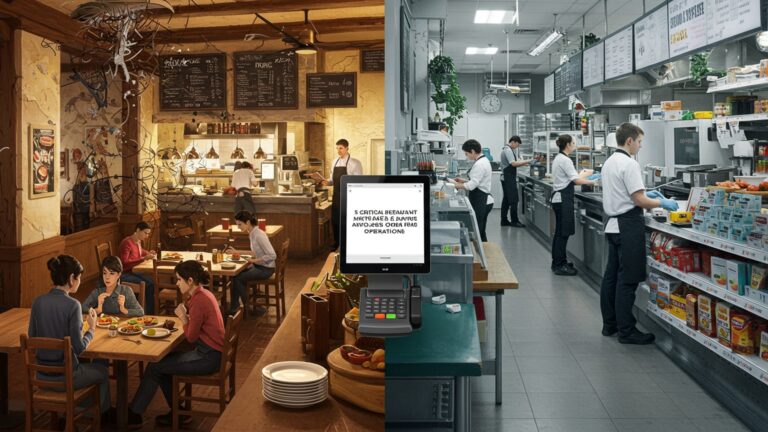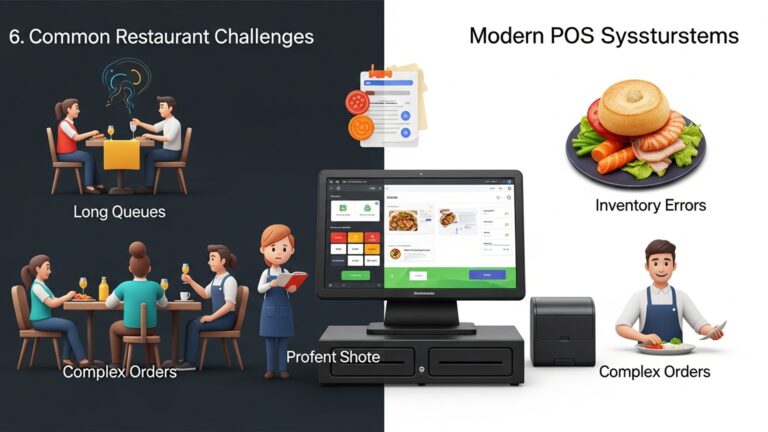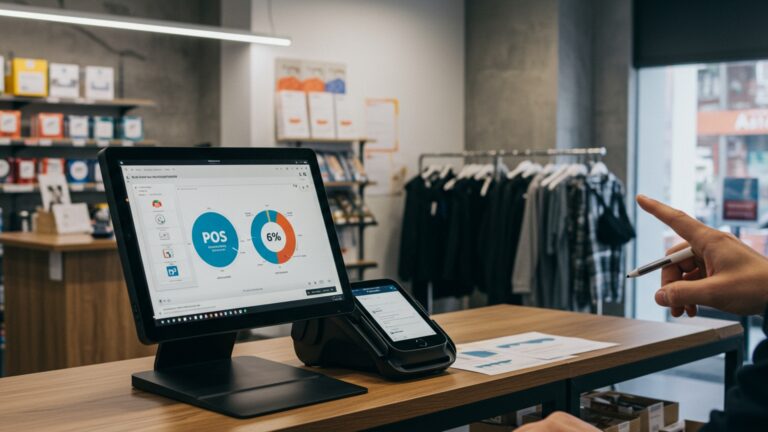Discover the Top 7 Android POS Software Solutions for Your Business Needs
Navigating the dynamic landscape of modern commerce demands agile and robust point-of-sale systems that transcend traditional bulky setups. Businesses, from bustling pop-up shops to expanding retail chains, increasingly leverage the versatility of Android devices for their transactional needs. The right software elevates a simple sale into a streamlined operational advantage, integrating critical functions like real-time inventory management, detailed customer analytics. diverse payment processing directly onto a portable interface. With cloud-based synchronization and enhanced security protocols now standard, identifying the best Android POS software is paramount for optimizing efficiency, driving informed decisions. ensuring a seamless customer experience in today’s competitive market.
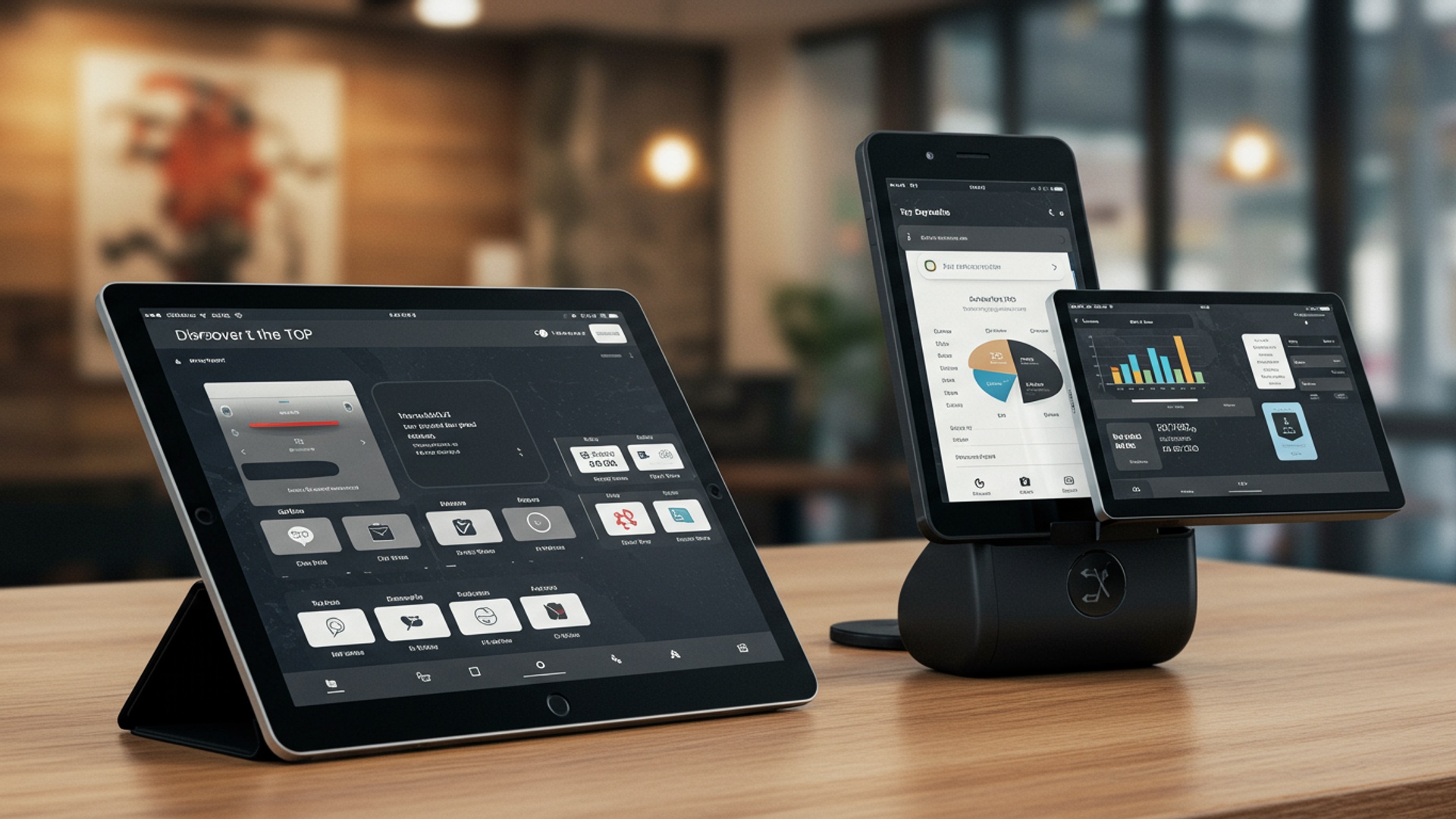
Understanding Android POS Software: A Game-Changer for Modern Businesses
In today’s fast-paced retail and service industries, efficiency and mobility are paramount. Traditional cash registers are rapidly being replaced by more dynamic, feature-rich Point of Sale (POS) systems. Among these, Android POS software solutions have emerged as powerful tools, offering flexibility, affordability. a user-friendly experience. But what exactly is an Android POS system?
An Android POS system leverages the versatility of the Android operating system, running specialized software on Android-powered devices like tablets, smartphones, or dedicated POS terminals. This setup transforms a standard Android device into a complete sales and business management tool. Unlike proprietary systems, Android POS solutions often come with lower hardware costs and greater flexibility in choosing devices. They provide a comprehensive suite of features, from processing transactions and managing inventory to tracking sales data and engaging customers. For businesses seeking the best android pos software, understanding these core capabilities is the first step towards digital transformation.
Why Android POS Solutions Are Essential for Your Business
The shift towards Android POS is driven by several compelling advantages that directly impact a business’s bottom line and operational efficiency. Here are some key benefits:
- Cost-Effectiveness
- Flexibility and Mobility
- User-Friendly Interface
- Rich Ecosystem of Apps
- Scalability
- Enhanced Data Analytics
Android devices are generally more affordable than proprietary POS hardware or Apple iOS alternatives, significantly reducing initial setup costs.
Conduct sales, check inventory. manage staff from anywhere within your store or even on the go, making it ideal for pop-up shops, food trucks, or mobile service providers.
Most Android interfaces are intuitive and familiar to users, reducing training time for staff and minimizing errors during transactions.
The Android platform allows for seamless integration with a vast array of third-party apps, from accounting software to customer loyalty programs, enhancing overall business operations.
Whether you’re a small coffee shop or a growing retail chain, Android POS solutions can scale with your business, adding new terminals or features as needed.
Gain real-time insights into sales trends, popular products. customer behavior, enabling data-driven decisions to optimize your business strategy.
These benefits highlight why investing in the best android pos software is a strategic move for businesses aiming for growth and operational excellence.
Key Features to Look for in the Best Android POS Software
Before diving into specific solutions, it’s crucial to know what functionalities define a robust Android POS system. When evaluating options, consider these core features:
- Sales and Transaction Processing
- Inventory Management
- Customer Relationship Management (CRM)
- Employee Management
- Reporting and Analytics
- Hardware Compatibility
- Offline Mode Capability
- Security Features
Essential for handling various payment methods (cash, card, mobile payments), applying discounts. processing returns/exchanges efficiently.
Track stock levels, manage variations (size, color), receive low-stock alerts. streamline ordering processes to prevent stockouts and overstocking.
Build customer profiles, track purchase history, manage loyalty programs. facilitate targeted marketing efforts.
Manage staff access, track individual sales performance, clock-in/out functionality. schedule shifts.
Generate detailed reports on sales, inventory, employee performance. customer trends to inform business decisions.
Ensure the software seamlessly integrates with essential hardware like barcode scanners, receipt printers, cash drawers. card readers.
Crucial for maintaining operations during internet outages, ensuring sales can continue without interruption.
PCI compliance, data encryption. user access controls are vital for protecting sensitive business and customer data.
Discovering the Top 7 Android POS Software Solutions
Navigating the myriad of Android POS options can be challenging. To help you find the best android pos software for your unique needs, we’ve compiled a list of top contenders, each with distinct strengths and ideal use cases.
Square POS
Square is arguably one of the most recognizable names in the POS industry, known for its user-friendly interface and comprehensive suite of tools that cater particularly well to small and medium-sized businesses. Its Android POS software transforms any Android tablet or smartphone into a powerful point-of-sale system. Square is renowned for its ease of setup and transparent pricing, making it a popular choice for new businesses or those looking for a straightforward solution. For example, a local artisan selling handmade goods at a market can simply use their Android phone with a Square reader to accept payments, track sales. manage inventory on the go.
- Key Features
- Ideal For
Integrated payment processing, inventory management, customer directory, employee management, detailed sales reports, online store integration. a free basic plan.
Small businesses, mobile merchants, cafes, retail shops. service providers.
Shopify POS
For businesses with an existing or planned e-commerce presence, Shopify POS stands out as a top-tier Android solution. It seamlessly integrates your online store with your physical retail location, creating a unified sales channel. This means inventory, customer data. sales reports are synchronized across both platforms, providing a holistic view of your business. A boutique clothing store, for instance, can use Shopify POS on an Android tablet to manage in-store sales while simultaneously updating stock levels on their Shopify e-commerce website, ensuring no overselling or discrepancies.
- Key Features
- Ideal For
Omnichannel selling, inventory sync, customer profiles, staff management, extensive app store for integrations. robust reporting.
Retailers with both online and physical stores, pop-up shops. businesses focused on growth.
Lightspeed Retail POS
Lightspeed Retail POS is a robust, cloud-based solution designed for serious retailers, particularly those with complex inventory needs or multiple locations. While it offers a powerful iOS app, its Android capabilities are expanding and highly capable for specific hardware. It provides advanced inventory management tools, detailed purchasing. vendor management, making it an excellent choice for businesses like electronics stores, apparel boutiques, or specialty shops that require meticulous control over their stock. Its analytical tools help retailers identify trends and optimize their product offerings, truly making it a contender for the best android pos software for specialized retail.
- Key Features
- Ideal For
Advanced inventory management, multi-store capabilities, customer loyalty programs, vendor management, robust reporting. integrated e-commerce.
Medium to large-sized retailers, specialty stores. businesses with complex inventory.
Clover POS
Clover offers a range of dedicated Android-based hardware, from mobile devices (Clover Go, Flex) to countertop terminals (Clover Station), all running its intuitive Android POS software. This ecosystem provides a sleek, integrated solution that’s both powerful and easy to use. Clover is highly customizable with a vast app market, allowing businesses to tailor their POS system to specific needs, whether it’s for a restaurant needing table management or a salon requiring appointment booking. A bustling cafe, for example, could use a Clover Flex on their Android device to take orders at the table and process payments quickly.
- Key Features
- Ideal For
Dedicated hardware options, extensive app market, integrated payment processing, robust reporting, employee management. loyalty programs.
Restaurants, quick-service establishments, retail stores. service-based businesses looking for an all-in-one solution.
Toast POS
While primarily known as a restaurant-specific POS system, Toast’s platform is built on Android, offering a powerful, integrated solution tailored for the food service industry. From tableside ordering on Android tablets to kitchen display systems and online ordering, Toast streamlines every aspect of restaurant operations. Its Android foundation allows for durable, custom hardware designed to withstand the rigors of a busy kitchen or dining room. A busy pizzeria, for instance, can use Toast’s Android-based terminals for order entry, inventory management of ingredients. customer loyalty tracking, all within a single system.
- Key Features
- Ideal For
Restaurant-specific features (table management, menu management, kitchen display systems), online ordering, loyalty programs, robust reporting. integrated payments.
Restaurants, cafes, bars. any food service business.
Loyverse POS
Loyverse is a fantastic free Android POS software solution that provides essential features for small businesses without the recurring subscription fees often associated with other systems. It’s incredibly accessible, allowing businesses to download the app onto any Android device and start processing sales almost immediately. While the core POS is free, additional functionalities like advanced inventory or employee management can be added through paid modules. This makes it an attractive option for micro-businesses or startups looking to minimize operational costs. A small independent bookstore could utilize Loyverse on an Android tablet for sales, basic inventory tracking. even customer loyalty without a significant upfront investment, positioning it as excellent best android pos software for budget-conscious users.
- Key Features
- Ideal For
Free basic POS, inventory management, customer loyalty, sales analytics, employee management. multi-store support (with paid add-ons).
Small businesses, startups, cafes, food trucks. low-volume retail.
Epos Now
Epos Now offers a comprehensive, cloud-based Android POS system suitable for a wide range of retail and hospitality businesses. It’s known for its extensive feature set and powerful integrations, allowing businesses to manage everything from sales and inventory to CRM and accounting. Epos Now’s Android solution can run on various Android terminals and tablets, providing flexibility in hardware choices. A growing bar, for example, could leverage Epos Now’s Android system to manage drink orders, track ingredient inventory, integrate with accounting software. review peak business hours to optimize staffing.
- Key Features
- Ideal For
Robust inventory control, detailed reporting, employee management, CRM, extensive third-party integrations. scalable for multiple locations.
Retail, hospitality (bars, restaurants). businesses looking for a highly customizable and integrated solution.
Comparison of Top Android POS Software Solutions
To help you weigh your options, here’s a comparative overview of the top 7 Android POS software solutions:
| Software | Best For | Key Features Highlight | Pricing Model | Pros | Cons |
|---|---|---|---|---|---|
| Square POS | Small businesses, mobile merchants | Integrated payments, free basic plan, user-friendly | Free POS software, transaction fees apply (2. 6% + $0. 10 for tap, dip, swipe) | Easy setup, transparent pricing, robust ecosystem | Higher transaction fees for high volume, limited advanced features on free plan |
| Shopify POS | Retailers with online & physical stores | Omnichannel sync, inventory management, app store | Subscription-based (requires Shopify plan), transaction fees apply | Seamless e-commerce integration, scalable, extensive app marketplace | Can be expensive for small businesses, requires existing Shopify store |
| Lightspeed Retail POS | Medium to large retailers, specialty stores | Advanced inventory, multi-store, vendor management | Subscription-based (tiered plans starting ~$69/month) | Powerful retail tools, excellent for complex inventory, strong analytics | Higher price point, steeper learning curve, less mobile-first than Square |
| Clover POS | Restaurants, QSRs, retail, service businesses | Dedicated Android hardware, app market, integrated payments | Subscription-based (tiered plans), transaction fees apply | Sleek integrated hardware, highly customizable via apps, reliable | Hardware purchase required, can get expensive with many apps |
| Toast POS | Restaurants, cafes, bars, food service | Restaurant-specific features, online ordering, KDS | Subscription-based (tiered plans, often custom quotes) | Built for restaurants, robust features, durable hardware | Niche-specific, not suitable for retail, can be expensive |
| Loyverse POS | Small businesses, startups, low-volume retail | Free basic POS, inventory, customer loyalty | Free basic POS, paid add-ons for advanced features | Cost-effective, easy to use, good for startups | Limited advanced features on free plan, less robust reporting |
| Epos Now | Retail, hospitality, growing businesses | Comprehensive features, extensive integrations, scalable | Subscription-based (tiered plans starting ~$39/month) | Highly customizable, strong integrations, good for diverse business types | Can be complex to set up initially, add-ons can increase cost |
Choosing the Right Android POS Software for Your Business
Selecting the best android pos software is a critical decision that can significantly impact your business’s efficiency and growth. Here’s a structured approach to help you make an informed choice:
- Assess Your Business Needs
- Industry Specifics
- Size and Scale
- Inventory Complexity
- Customer Engagement
- Consider Your Budget
- Upfront vs. Recurring Costs
- Hidden Fees
- Evaluate Ease of Use and Training
- A system that’s intuitive will reduce staff training time and potential errors. Test out demos or free trials to get a feel for the interface.
- Check for Integrations
- Does the POS system connect with your existing accounting software (e. g. , QuickBooks, Xero), e-commerce platform, or other essential business tools?
- Review Customer Support
- Reliable 24/7 customer support can be invaluable, especially during peak business hours or in case of technical issues.
- Data Security and Compliance
- Ensure the system is PCI compliant and offers robust security features to protect sensitive payment and customer data.
Are you in retail, hospitality, services, or a mobile business? Toast is great for restaurants, while Shopify POS shines for retail with e-commerce.
A small startup might thrive with Loyverse’s free basic plan, whereas a growing chain might need Lightspeed’s multi-location capabilities.
Do you need basic tracking or advanced features like variations, matrix inventory. purchase orders?
Are loyalty programs and detailed customer profiles a priority?
Factor in hardware costs, monthly subscription fees. transaction processing rates. Some, like Square, offer free software but charge per transaction.
Be aware of potential costs for add-ons, integrations, or customer support.
By thoroughly evaluating these factors, you can pinpoint the Android POS solution that perfectly aligns with your operational demands and strategic goals.
The Future of Android POS: Trends and Innovations
The Android POS landscape is continuously evolving, driven by technological advancements and changing consumer expectations. Businesses adopting the best android pos software should keep an eye on these emerging trends:
- AI and Machine Learning
- Contactless and Mobile Payments
- Enhanced Data Analytics
- Cloud-Native Solutions
- Integrated Customer Experiences
- Self-Service Kiosks
Expect more intelligent POS systems that can predict sales trends, suggest optimal inventory levels. personalize customer experiences based on purchase history.
The rise of NFC, QR codes. digital wallets (like Google Pay) will continue to push POS systems towards even more seamless and secure contactless transaction capabilities.
POS systems will offer deeper insights into customer behavior, inventory turnover. employee performance, enabling more granular decision-making.
Greater reliance on cloud infrastructure will ensure real-time data synchronization, accessibility from anywhere. robust security updates.
POS will become an even more central hub for managing the entire customer journey, from online browsing to in-store purchase and post-sale support.
Android-powered self-checkout and ordering kiosks will become more prevalent, improving efficiency and reducing wait times, particularly in quick-service environments.
These innovations promise to make Android POS software even more powerful, efficient. integral to the success of modern businesses.
Written by PromotoAI
promotoai generate content that ranks
Conclusion
Choosing the right Android POS isn’t just about processing transactions; it’s about empowering your business to thrive in a mobile-first world. As we’ve explored, the ideal solution seamlessly integrates critical aspects like inventory management, customer relationship data. real-time sales insights, essential for modern retail success. My personal tip? Beyond feature lists, truly evaluate the user experience for your staff and its scalability for future growth; a clunky system, no matter how feature-rich, will hinder efficiency. Take the time to trial a couple of options, testing how they handle specific scenarios in your niche, from managing split payments in a cafe to tracking loyalty points in a retail store. This strategic choice, much like optimizing your overall business efficiency, is pivotal. Embrace the flexibility and power an Android POS brings; you’re not merely upgrading your checkout. investing in streamlined operations, happier customers. a future-proof enterprise. Your journey to operational excellence begins with this informed decision.
More Articles
7 Best POS Software Options to Boost Your Business Efficiency
How to Choose the Best Android POS for Your Restaurant in India
Learn How to Implement POS Software for Cloud Kitchen Success in India
Learn How 10 Mobile POS Billing Apps Can Boost Grocery Efficiency
Discover the 7 Best POS Software Solutions in India for Your Business
Written by PromotoAI
promotoai generate content that ranks
FAQs
What exactly is an Android POS. why should my business even look into one?
An Android POS (Point of Sale) system is essentially a cash register and business management tool that runs on an Android device, like a tablet or smartphone. You should consider it because it’s usually more affordable, flexible. mobile than traditional systems, perfect for taking payments, managing inventory. tracking sales right from your pocket or counter.
With seven options, how do I figure out which one is actually the best fit for my specific business?
To pick the right one, first list your top priorities: what kind of business do you run (retail, restaurant, service)? What’s your budget? Do you need specific features like robust inventory, employee management, or loyalty programs? Then, compare these needs against the features, pricing. user reviews of each of the top 7 solutions to see which aligns best. Many offer free trials, which can be super helpful!
Are these Android POS solutions only for big companies, or can a small business like mine actually use them?
Absolutely not just for big companies! Android POS systems are often a fantastic choice for small to medium-sized businesses because they’re typically more budget-friendly, scalable. easy to set up without needing complex hardware. Many of the top solutions are designed with small business needs in mind, offering essential features without the hefty price tag.
What are the key features I should really look for in these Android POS systems?
You’ll want to prioritize core functions like efficient payment processing (accepting various payment types), inventory management (tracking stock, reorder points), sales reporting and analytics (understanding your performance). customer management (building loyalty). Other helpful features can include employee management, loyalty programs. integration with other business tools you might use.
Is it tough to get these systems set up and running, or are they pretty user-friendly for someone not super techy?
Most modern Android POS solutions are designed with user-friendliness in mind. Setup usually involves downloading an app, creating an account. connecting any hardware like a card reader or printer. Many offer intuitive interfaces and clear instructions, making them relatively easy to get started with, even if you’re not a tech wizard.
Can I connect these POS solutions with other tools, like my accounting software or my online store?
Yes, integration capabilities are a huge plus for many Android POS systems! Most top solutions offer integrations with popular accounting software (like QuickBooks or Xero), e-commerce platforms (like Shopify). other business tools. This helps streamline your operations by syncing data across different parts of your business, saving you time and reducing errors.
What about costs? Are there any hidden fees I should be aware of besides just a monthly subscription?
While a monthly subscription is common, it’s smart to look out for other potential costs. These can include transaction fees (a percentage per sale, especially with integrated payment processing), hardware costs (for tablets, card readers, receipt printers). sometimes additional fees for premium features, extra user accounts, or customer support tiers. Always read the fine print!

